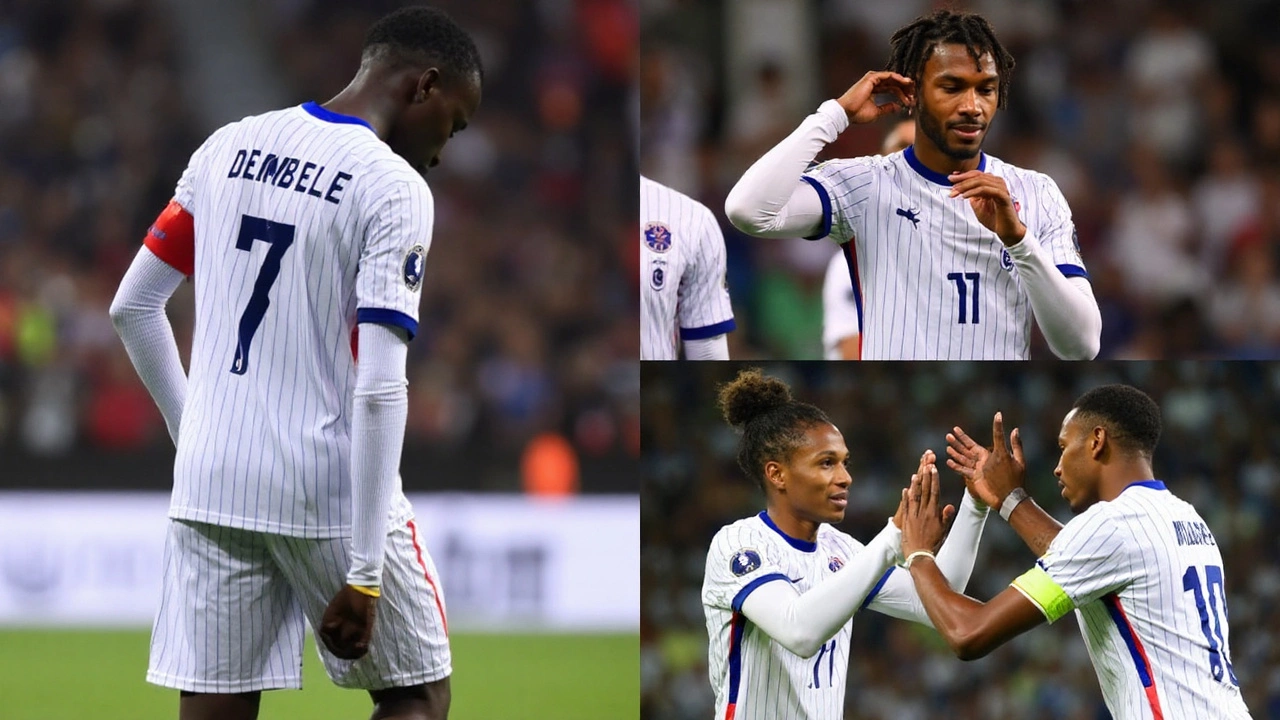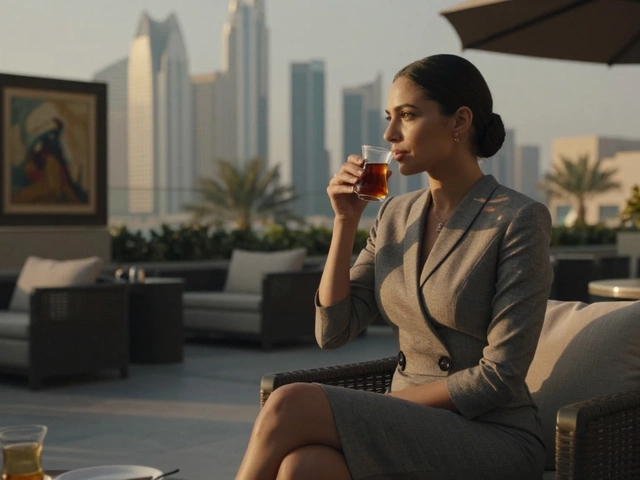How France reshapes the attack without Dembele
For years, France’s plan A on the right wing has been Ousmane Dembele stretching the pitch, isolating full-backs, and creating chaos. When he’s missing, the entire shape shifts. This isn’t just about replacing a winger; it’s about rebalancing Kylian Mbappé’s freedom on the opposite side, the midfield’s passing choices, and the way France press from the front.
Dembele’s profile is rare: he receives wide and high, dribbles off both feet, and pulls defenses apart. That width creates lanes for Mbappé to run inside and for the No. 9 to attack the near post. Without him, Didier Deschamps usually goes for either a pure winger (Kingsley Coman, Bradley Barcola, Moussa Diaby) to keep the touchline threat, or a more direct forward (Randal Kolo Muani, Marcus Thuram) who tucks inside and turns the right flank into a half-space channel.
Coman is the closest like-for-like. He stays wide, beats his man, and crosses early. The trade-off? You lose Dembele’s unpredictable angles into the box and his disguised reverse passes. If Deschamps picks Kolo Muani or Thuram on that side, France gain defensive work-rate and aerial presence, but the team becomes narrower. That pushes the right-back—often Jules Koundé—into a more aggressive overlap, which then asks the right-sided midfielder to sit a little deeper as cover.
This domino effect also changes Antoine Griezmann’s role. When France lack a true wide dribbler, Griezmann drifts out to the right to help progression, turning the shape into a 4-2-2-2 in possession. He links with the overlapping full-back and whips early balls to Mbappé. You see fewer 1v1 take-ons on that side, but more quick combinations and near-post runs.
Physically, hamstring issues have defined chunks of Dembele’s club career, especially in his Barcelona years, where repeated muscle injuries forced long load-management plans. A grade-1 strain can clear in 1–2 weeks; grade-2 can take 3–6. Teams now track high-speed runs and decelerations to judge readiness. France are conservative here: Deschamps prefers a fully fit winger to a 70% gamble in a knockout window. That’s why standby options matter.
When late injuries hit, Deschamps has form for bold replacements. In 2022, an injury in camp opened the door for Randal Kolo Muani, who changed games with his pressing and vertical runs. The lesson: the role often matters more than the name. If the team needs width and speed, the call usually goes to a true winger; if it needs pressing and box presence, a hybrid forward gets the nod.
So what’s the bottom line? If Dembele isn’t available, expect France to pick either a pure winger to preserve spacing or a channel-running forward to tilt the attack. The right-back’s job becomes bigger, Griezmann’s roaming increases, and Mbappé gets even more central freedom. The system survives because the principles—width when possible, quick vertical switches, hard pressing—stay the same.
All of this sits under one reality: the team is different without the Ousmane Dembele injury risk hovering over selection. When he’s fully fit, France can stretch both touchlines and win games in transition or against a deep block. When he’s not, they compress, pass more, and lean on combinations rather than dribbles to break lines.
What a Hugo Ekitike debut would look like
Hugo Ekitike is a different conversation. He isn’t a carbon copy of Dembele—he’s a forward whose best work comes in the channels and inside the box. His breakout at Reims showed why scouts liked him: smart off-ball movement, neat first touch under pressure, and calm finishes across the keeper. At Paris Saint-Germain, minutes were scarce, but the tools remained: tall frame, stride length, and a knack for timing runs behind a high line.
What would Deschamps ask from him? First, pressing. France start their defensive work with the front line, and Ekitike can lead a press or lock onto a center-back and screen passes into midfield. Second, occupation of the last line. He’s at his best when he pins defenders and opens lanes for Mbappé and Griezmann. Third, simple link play. One- and two-touch layoffs to keep tempo—nothing flashy, just clean combinations to set the wingers free.
There are two realistic pathways for a debut. One: bench impact as a late substitute when France need fresh legs to attack space in transition. In that role, he’d focus on diagonal runs off the shoulder, attacking cut-backs, and being alive on second balls. Two: a start in a rotated XI, often in friendlies, where Deschamps tests chemistry with Mbappé and Griezmann. The staff would watch his timing around the box, his pressing triggers, and how he handles back-to-goal under contact.
The competition is real. Marcus Thuram offers hold-up play and power. Kolo Muani brings pressing and flexibility. Olivier Giroud has been the reference point for years and remains a reliable target. For Ekitike to jump the queue, he needs club rhythm: steady minutes, sharp movement, and confidence. Deschamps has said it often—form matters more than reputation.
Tactically, the clean fit is as a No. 9 with freedom to drift into the right channel. That keeps Mbappé from being double-teamed and opens room for a right-sided runner. Against low blocks, Ekitike’s job is to occupy center-backs and attack near-post zones; against high lines, it’s to sprint into space and finish early. The margin is thin at this level: two chances, one goal can decide whether a trial becomes a role.
Injury context ties these threads together. If France are short on wide dribblers, the staff may choose to double down on direct runs in behind and quick switches, which favors a striker who stretches the last line. That’s where Ekitike can offer something different—less about beating a man, more about arriving on time. If the squad is healthy on the wings, he still has a path as a late-game outlet when the match gets stretched.
Big picture, France have the depth to survive absences and the flexibility to look different without losing edge. When Dembele is flying, the team can live on width and speed. If he’s out, they adapt with structure and smart movement. And if Ekitike earns his chance, it will be because his profile answers a specific need: pressing from the front, stretching defenses, and finishing the chances this midfield creates.



